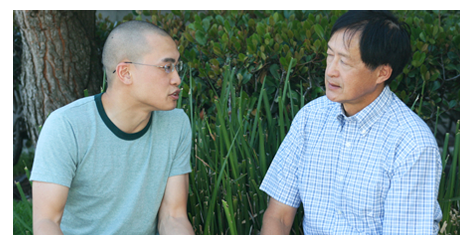
Disclosing News to Adult Children in Ways that Build Relational Closeness
How do young adults perceive parental disclosures of information, and how do these perceptions affect parent-adult child relational closeness? These questions interested Erin Donovan of the University of Texas, Charee M. Thompson of Ohio University, Leah LeFebvre of the University of Wyoming, and Andrew C. Tollison of Merrimack College.
“My previous research had indicated that parents really struggle with how to deliver important news effectively to their grown kids,” says Donovan. “You can find information online like ‘how to tell your kindergartener that you have cancer in a way she can understand,’ but there's virtually no guidance for how to talk to young adult children, even though parents, understandably, worry about how to do this.” Further, she explains, research on openness and disclosure has traditionally focused on the person doing the disclosing, not the confidants. “So, those were two problems that I thought our project could address. I wanted to be able to say to parents: Here’s how to disclose important news well to your adult children.”
In two studies, Donovan and her colleagues examined what makes parental disclosure successful in the eyes of their young adult children.
Evaluating Parental Disclosures
In their initial study, the researchers asked: “What dimensions of parental openness contribute to the quality of parental disclosures?” They collected survey responses from 298 undergraduate students who, on average, were between 19 and 20 years old. Students were asked to recall a time when a parent had shared important information with them. Topics of disclosure included a parent’s illness, the death of a loved one, a change in parental employment, a move, and family secrets or family turbulence.
Participants were asked to describe the conversation, then write about what contributed to the success or failure of the conversation. The students were also asked what they would keep the same or change were the conversation to happen again. The four authors used qualitative analysis to process the results.
Students indicated that parental disclosures were evaluated based on how cooperatively parents seemed to offer access to a sufficient quantity of information. Responses mentioning this dimension tended to focus on how parents “filled us in as much as they could” or whether a participant felt as though he or she had “learned everything I needed to know.” When a parent had been relatively unwilling or unable to provide access to information, participants noted their dissatisfaction with the lack of information provided. Another aspect students noted was “candor,” which was related to participant descriptions of how honest, straightforward, and unambiguous parents were when disclosing. When children knew or felt that parents had been dishonest, the communication was deemed unsuccessful. One participant explained:
Recently my mom was having surgery and had to have some tests run the day before. I called her to ask how her tests had gone and she explained that they went fine. That was the end of the conversation. Then the next day I talked to her, she explained that she had lied to me the day before and one of her tests had come back with an abnormality. I was devastated because she tried to hide it from me.
Another theme that emerged from the first study was that children deemed disclosure more successful when “relating as peers” with their parents. When parents opened up in a manner that reflected an appreciation for a child’s maturity, participants perceived that the communication was more successful. They described their parents as “being real,” treating them as adults and confiding in them the way a friend or peer would, rather than shielding them the way parents do with young children.
Drawing on participant responses, the authors hypothesized that three dimensions of parental openness—access to information, candor, and relating as peers—were positively associated with emerging adult confidants’ perceptions of relational closeness. The authors also hypothesized that the three dimensions of parental openness would be positively associated with young adult perceptions of the quality of the disclosure. Finally, they theorized that disclosure quality would mediate the associations between access to information and relational closeness, candor and relational closeness, and relating as peers and relational closeness.
Via the results of an online questionnaire of 212 undergraduate students, the researchers confirmed most of their hypotheses, finding that access to information and relating as peers were the two factors that predicted disclosure quality and, in turn, predicted increased relational closeness.
Implications
This study provides a needed analysis of how emerging adult confidants view parental openness and its relational outcomes. Disclosure may be an important way to promote and maintain relational closeness even as young adults become more independent from their parents. These findings support the notion that the likelihood of post-disclosure closeness increases when emerging adults are satisfied with the openness they believe their parents demonstrated in their disclosure. “Moreover, parents’ initial openness about important information may contribute to the relational climate going forward,” the authors write.

